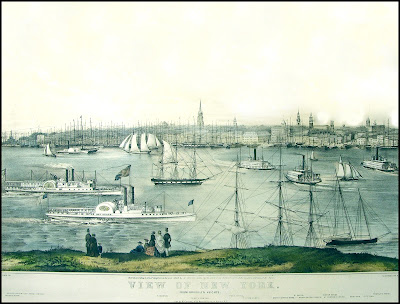Offering of the Day: An Exceptional and Classic New York View
View of New York
Lithograph with hand color
13 1/4 x 18 inches
New York, 1849.
$16,000
The publishing firm of Currier & Ives created the most popular and highly regarded lithographs of quintessentially American scenes ever produced. The quality, vast scope and engagingly populist style of their works have made their names synonymous with an idealistic vision of 19th-century American promise and optimism. Nathaniel Currier began his lithographic career as an apprentice in 1828. By the mid-1830’s he had established his own firm on Spruce street in New York City. In 1857 James Ives became a partner in the flourishing business, which went on to produce over 7,000 lithographs by 1907. Currier & Ives’ broad productivity was accompanied by consistent high standards of printing and hand-coloring, and by their ability to draw on original works by many of the finest American genre painters of the times, artist such as Tait. This is an exceptional and highly engaging work by a uniquely American Artist.
Fanny Palmer created some of Currier & Ives’s most memorable imagery. She was born in Leicester, England, in 1812, learning to draw at a girls' school in Leicester run by the artist Mary Linwood (1756-1845). With her husband, Edmund S. Palmer, she started a lithography business in 1841 (she was the artist and he the printer). By 1844 the Palmers had emigrated to New York City and opened the printing firm of F. & S. Palmer. Fanny Palmer created prints of newsworthy subjects, sheet-music covers, flower albums and copies of architectural drawings for her company and other publishers. Nathaniel Currier soon recognized her talent and in 1849 published her two panoramic views of New York, seen from Brooklyn Heights and Weehawken. When the Palmers' business failed (around 1851), Palmer became a staff artist for Currier.
Especially noted for atmospheric landscapes, F. F. Palmer, as she signed herself, created many of Currier & Ives's finest rural and genre scenes, sporting prints and still-lifes. Her style and subject-matter became increasingly dramatic, though in her last years at the firm, Palmer created romanticized panoramas that capture the scale and drama of the settling of the West. Although her prints were known to millions (and continue to be reproduced on calendars and greeting cards), Palmer died in obscurity in Brooklyn in 1876.



Comments
Post a Comment